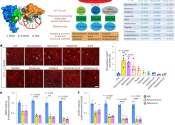Researchers: Exercise should be prescribed for people with Parkinson's
No pharmacological medication currently available can cure or slow down Parkinson's disease. However, based on an extensive literature review recently published in the journal Journal of Neurology, Neurosurgery & Psychiatry, ...
13 hours ago
0
0









